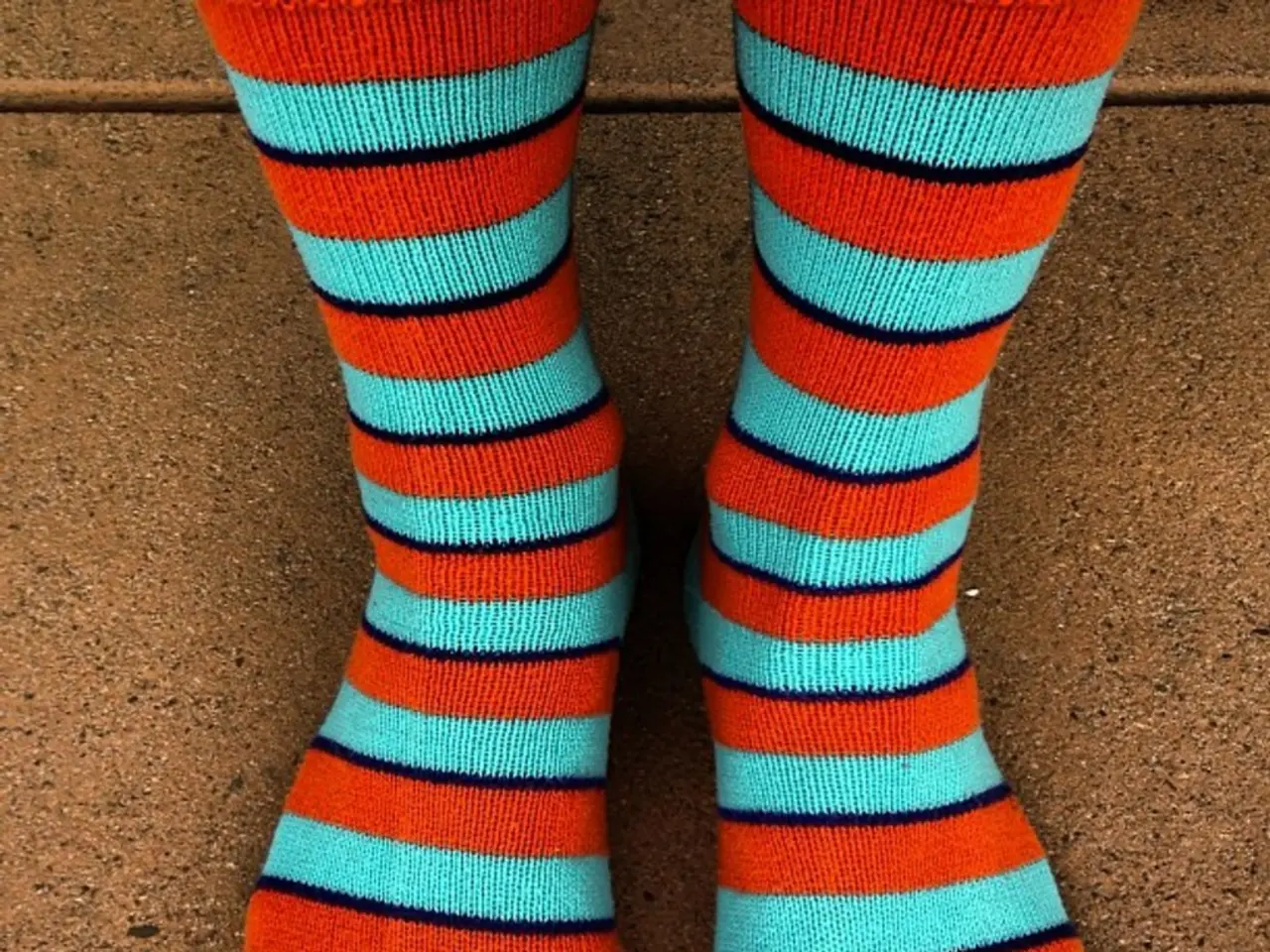Relieve weary, fatigued feet during hiking with top-notch hiking socks.
For hikers embarking on their next adventure, selecting the right pair of socks can make all the difference between a comfortable journey and a blister-filled one. Here's a guide to help you make an informed decision when choosing hiking socks.
When it comes to materials, hiking socks are typically made from synthetic fibres, merino wool, or a blend of both. Merino wool is renowned for its comfort, warmth even when damp, and natural odour resistance, making it ideal for multi-day hikes. Synthetic fibres dry faster and may be preferable if quick drying is a priority.
Fit and length are crucial factors to consider. Socks should fit perfectly to prevent pressure points and blisters. The sock height should correspond to your hiking boots—longer socks are needed for high hiking boots to protect the ankles and extend beyond the boot tops.
Cushioning and padding play a significant role in hiking socks. Midweight or heavily cushioned socks provide extra comfort and protection for rugged terrain or long hikes, reducing foot fatigue and blisters. Lightweight or ultralight socks are better suited for warm weather or less demanding hikes.
Sock weight and conditions are essential considerations. Socks come in weights ranging from ultralight to heavyweight, matching various weather and terrain conditions. Ultralight socks suit warm weather, lightweight socks for moderate conditions, midweight socks for three-season use, and heavyweight socks for cold weather and challenging terrain.
Support features, such as anatomically designed socks with arch support, reinforced heels and toes, and seamless toes, reduce friction, enhance stability, and prevent blisters.
Thermoregulation is another essential factor. Merino wool socks help maintain a comfortable foot climate by providing warmth when wet and keeping feet dry.
The Swiftwick Flite XT Trail Quarter Crew Socks are designed for trail running, with grip technology to prevent foot sliding inside shoes. With a medium-level compression, they may feel too tight for some users, but they offer extra protection around the ankle and heel to prevent wear or blisters.
The Injinji Outdoor Midweight Crew Wool Socks are designed to prevent blisters and chafing, with a seamless design and double-layer construction. The Hikerkind Trail Sock 01 offers lots of padding underfoot for comfort on long days, without adding unwanted warmth.
The Farm to Feet Modern Socks are designed to wick moisture, resist stink, and have great cushioning around the heels and toes. The Smartwool Hike Crew Socks have light cushioning and are suitable for both winter and summer hikes. The Smartwool Classic Hike line offers more targeted cushioning and has retro-chic outdoor vibes.
For those seeking a more lightweight option, the Darn Tough Critter Club Lightweight Micro Crew Socks feature cute, cuddly designs and have an ultra-smooth, soft feel. The Darn Tough Hiker Boot Midweight Hiking Sock is designed for long-distance comfort and has reinforced cushioning along the Achilles tendon and ankle.
In summary, the perfect hiking sock fits well, matches your boot height, offers appropriate cushioning and support for your hiking conditions, and uses materials that balance moisture management, comfort, and durability. By considering these factors, hikers can ensure a more enjoyable, blister-free experience on their next adventure.
[1] Source: REI Co-op Journal, "Choosing Hiking Socks: A Guide to Comfort and Performance" [2] Source: OutdoorGearLab, "Best Hiking Socks" [3] Source: Backpacker, "The Best Hiking Socks of 2021" [4] Source: The North Face, "How to Choose the Right Hiking Socks" [5] Source: Smartwool, "The Benefits of Merino Wool"
- When shopping for hiking socks, consider materials like synthetic fibers, merino wool, or a blend for optimal comfort and performance.
- Fit and length are essential factors, ensuring a perfect fit to prevent pressure points and blisters, with sock height corresponding to your hiking boots.
- Cushioning and padding play a significant role, reducing foot fatigue and blisters, with midweight or heavily cushioned socks preferable for rugged terrain or long hikes.
- Sock weight and conditions are crucial, ranging from ultralight for warm weather to heavyweight for cold weather and challenging terrain.
- Support features such as anatomically designed socks with arch support, reinforced heels, and toes, and seamless toes, reduce friction and enhance stability.
- Thermoregulation is another essential factor, with merino wool socks maintaining a comfortable foot climate by providing warmth when wet and keeping feet dry.
- For trail running, consider socks like the Swiftwick Flite XT Trail Quarter Crew Socks, which offer grip technology and extra protection around the ankle and heel.
- For a more lightweight option, the Darn Tough Critter Club Lightweight Micro Crew Socks feature cute designs and an ultra-smooth, soft feel, while offering long-distance comfort.




